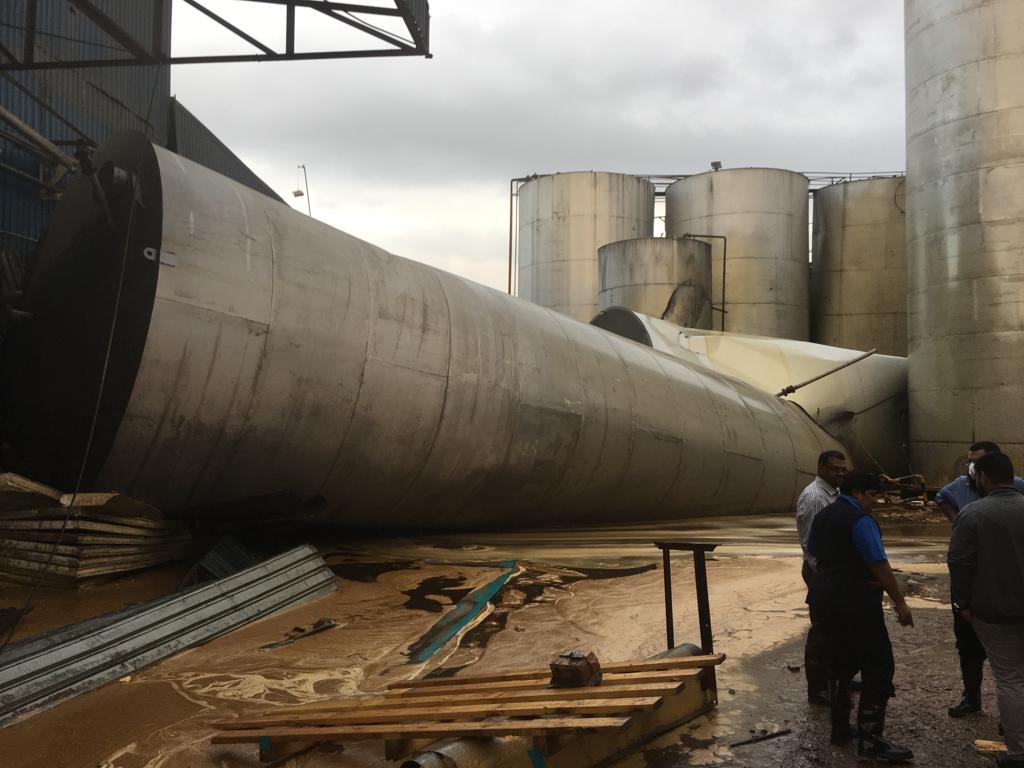Oil spill: Willowton agrees to community demands
Expert says uMsunduzi River can recover in a year if rehabilitation is done properly
Willowton Oil, the Pietermaritzburg edible oil manufacturer responsible for recent contamination of the uMsunduzi River, has pledged further assistance to communities affected by the massive spill of 1.6 million litres of fatty oil and caustic soda.
This follows a demonstration on Monday held outside the offices of Willowton Group by people living in immediate neighbouring communities. Grievances included drinking and fishing water contamination and the killing of crops.
Following the spill into the Baynespruit river, a tributary of the uMsunduzi, thousands of dead fish floated to the surface of the Msunduzi and Umgeni River rivers as far as 40km downstream of the plant. Both rivers turned a greyish, milky colour. Pollution soon extended as far as Inanda Dam, a major water supply to Durban.
Responding to Monday’s demonstration, the Willowton Group said it had resolved to assist in both the short and long-term rehabilitation of affected communities. In a subsequent meeting with nine leaders of the demonstration, it was agreed that this would include
-
provision of JoJo tanks and boreholes,
-
engagement with the Department of Water and Sanitation on the issue of water quality,
-
employment of qualified community members to assist in monitoring river quality,
-
“adopting” the Baynespruit river in association with Duzi-Umgeni Conservation Trust (DUCT) and the Imbalenhle Environmental Project which focuses on river clean-ups and creating community gardens, and
-
ensuring that a greater number of skilled and unskilled local residents are employed by the company.
“The company has also committed to the training of 25 unemployed persons every six months as part of the company training program. Furthermore, the company has promised to train ten suitably qualified females as code 14 drivers,” reads a Willowton statement.
In the wake of the industrial spillage, one of the worst in KwaZulu-Natal history, several people living in the Valley of a Thousand Hills claimed livestock died from drinking the polluted water. To date, though, no cases have been confirmed by the Department of Agriculture which is investigating the impact of the spill.
While some environmental experts say it could take several years for the Umsunduzi and Umgeni rivers to recover, Mark Graham of GroundTruth reckons if effective rehabilitation measures are put in place, reasonable river health could be restored within a year.
Graham has been appointed by Willowton to conduct the impact assessments and monitor river recovery over the next 12 months.
In a statement released on Tuesday, Willowton advised that in all accessible areas, the river and banks had been “cleared of visible product”. Initial feedback from the drone footage of inaccessible areas also indicated that that there was “little or no product in the river”.
“In the coming days, the specialists expect to provide confirmation that demobilisation of the spill clean-up crews and booms can take place,” reads the statement.
Independent water quality results were also in the process of being received and interpreted by specialists.
“These will be communicated to the competent authorities in due course,” said the Willowton Group.
On the longer term, Willowton has proposed working with DUCT to establish a “partnership for restoration and rehabilitation” of the Baynespruit River – a vital tributary which has for several decades been chronically polluted, both by high levels sewerage and industrial effluent from local factories, including Willowton Oil.
Support independent journalism
Donate using Payfast

Don't miss out on the latest news
We respect your privacy, and promise we won't spam you.
© 2019 GroundUp.
This article is licensed under a Creative Commons Attribution-NoDerivatives 4.0 International License.
You may republish this article, so long as you credit the authors and GroundUp, and do not change the text. Please include a link back to the original article.

